Lecture 2 Correspondent Inference Theory Behaviour that


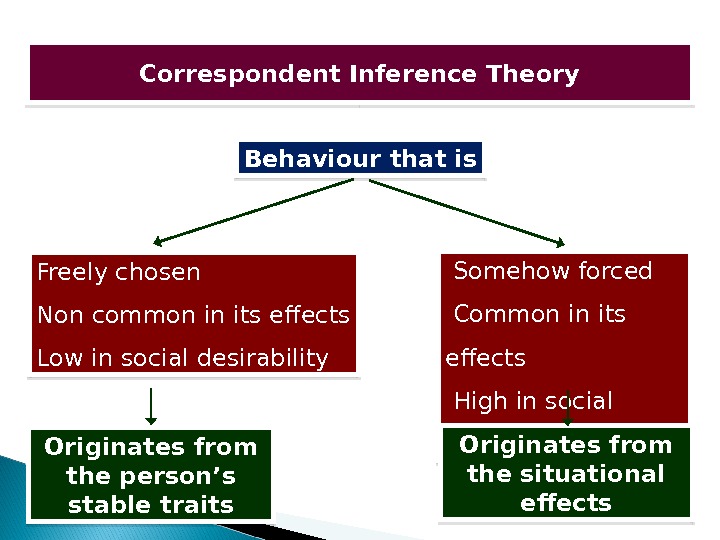
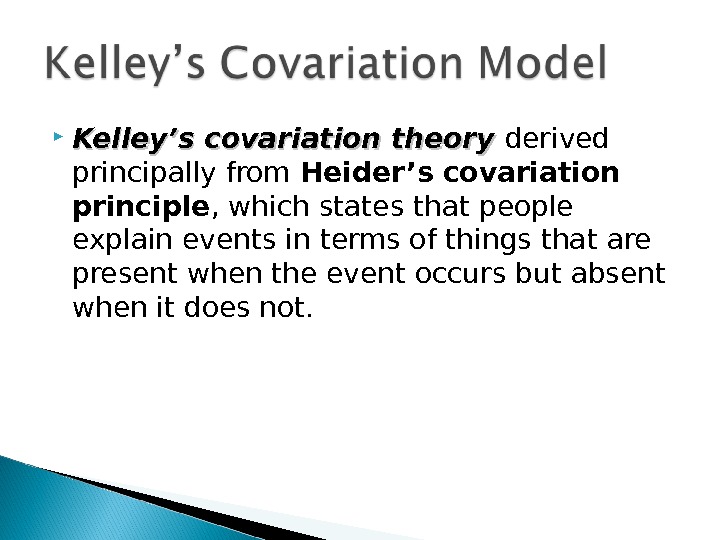


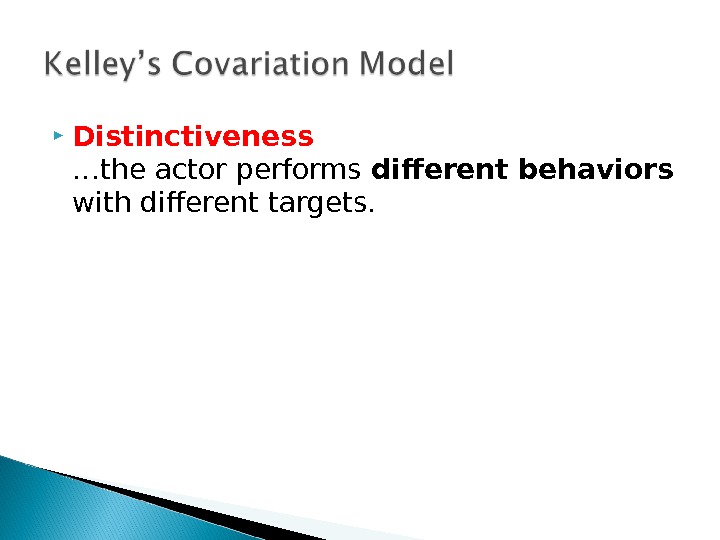
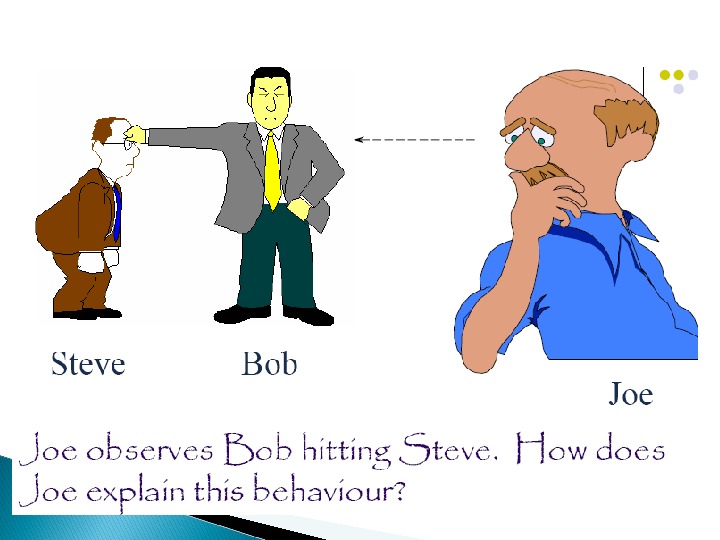
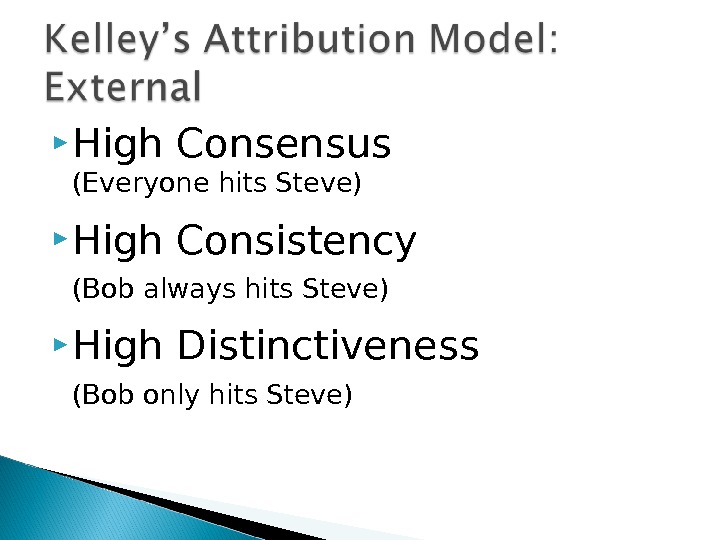
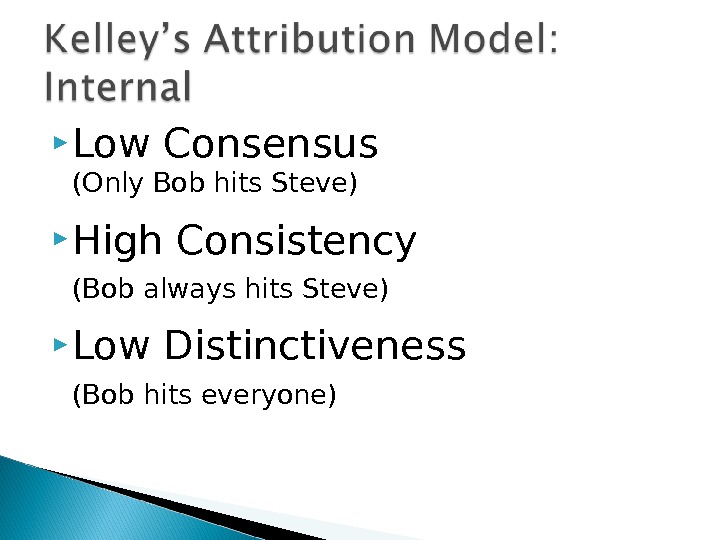
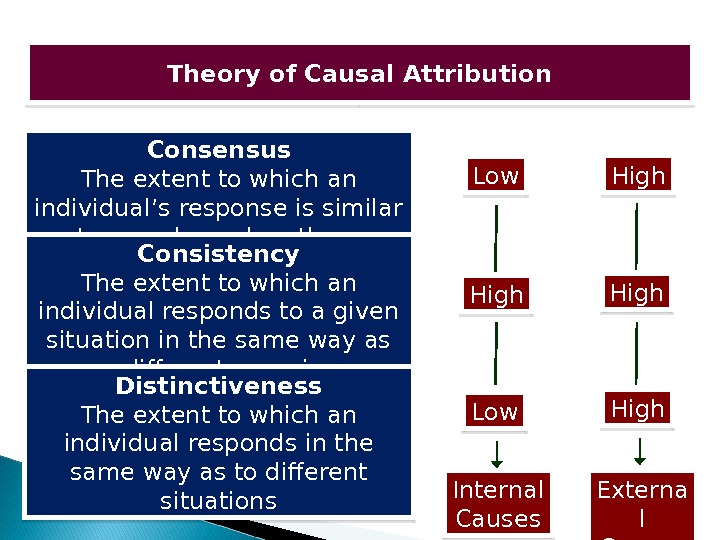
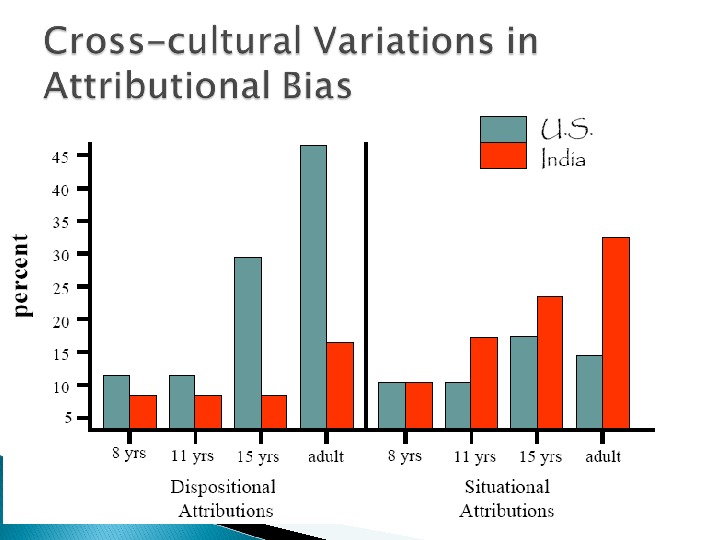
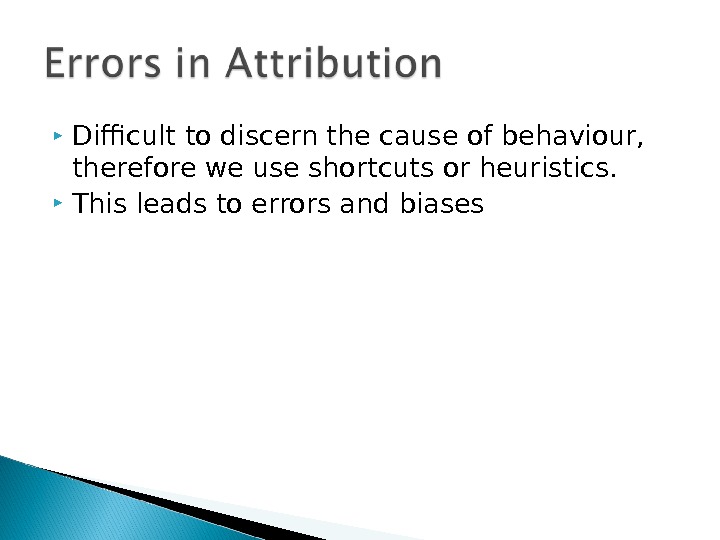
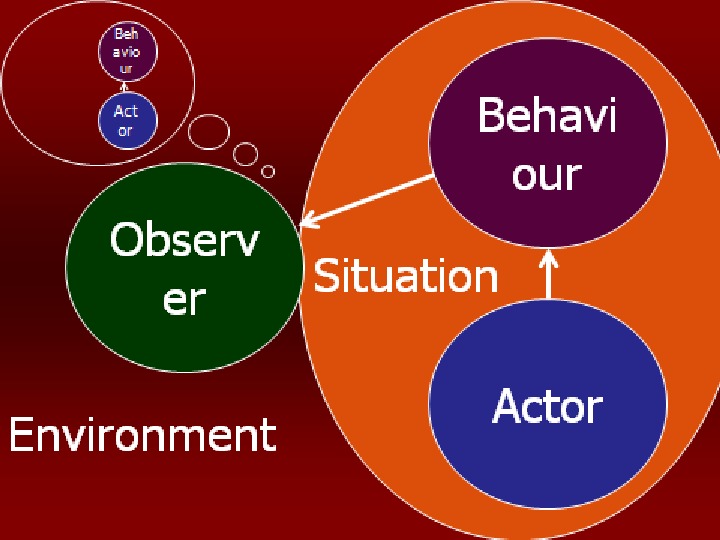
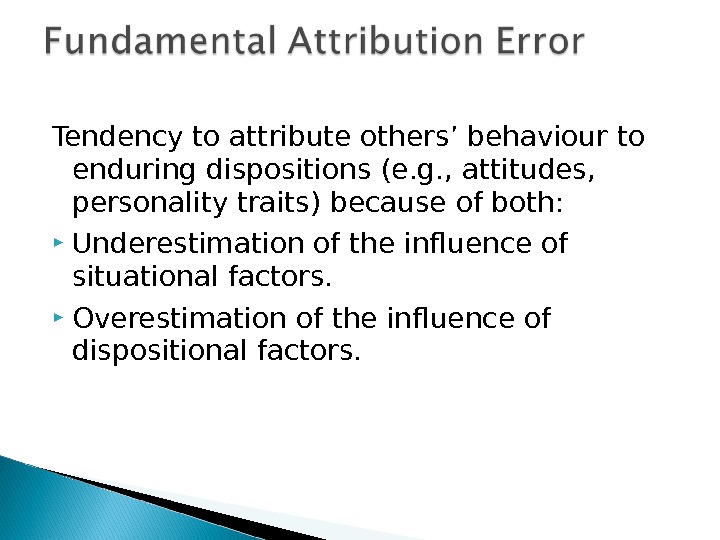
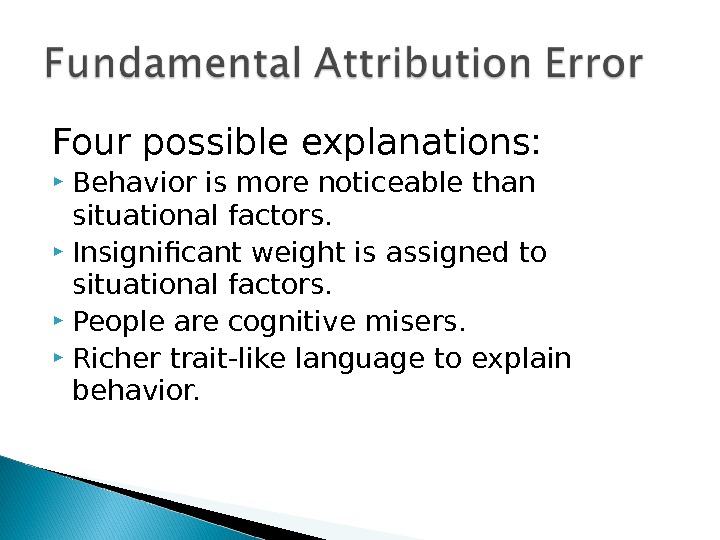
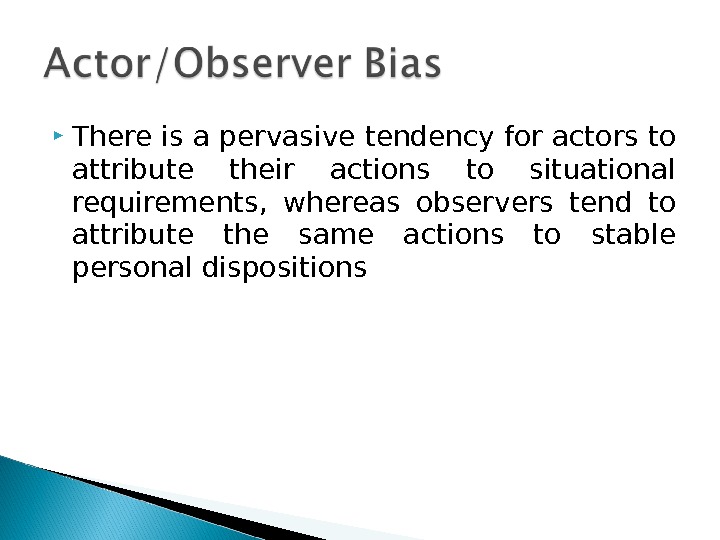
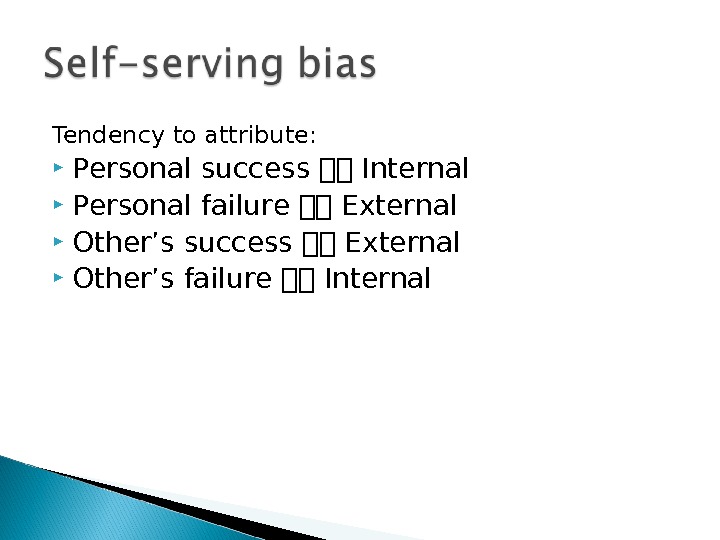

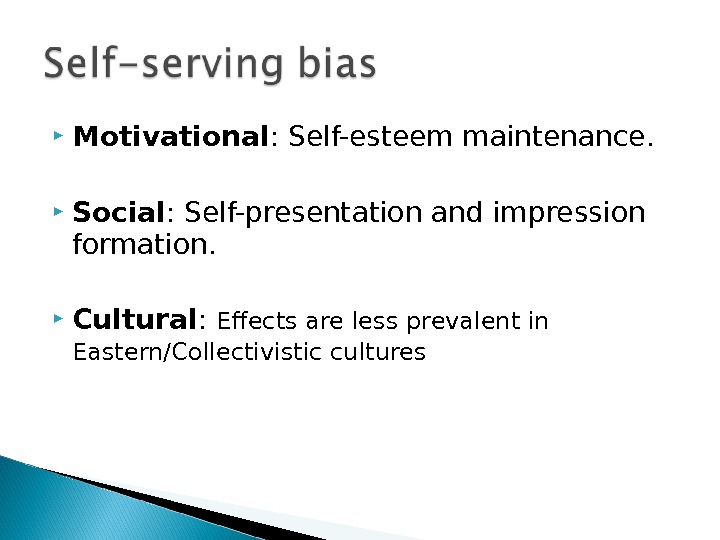
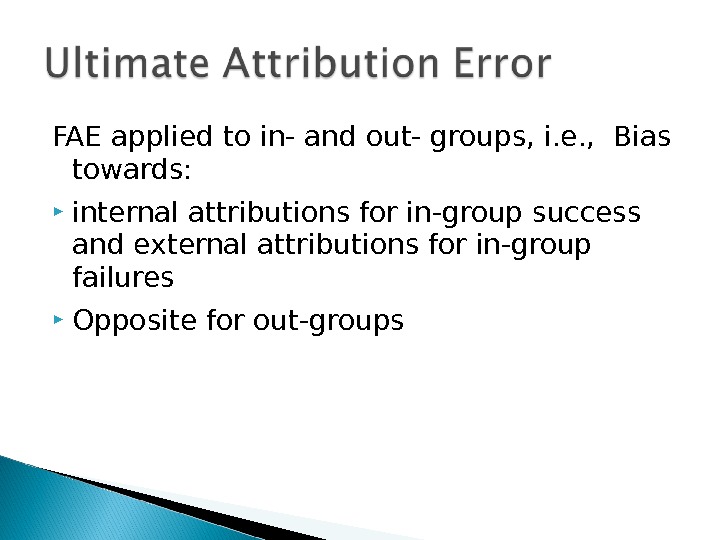
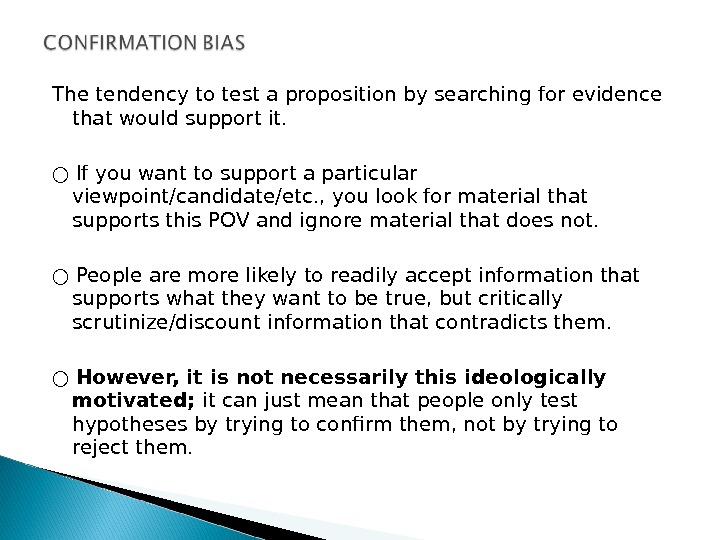
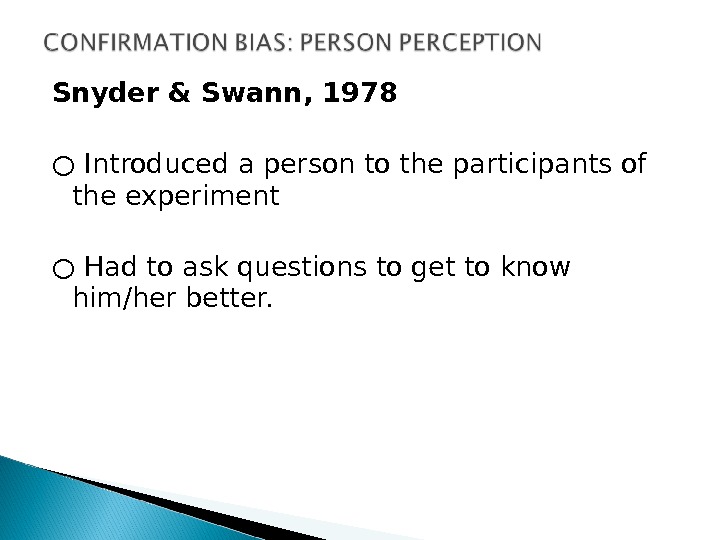
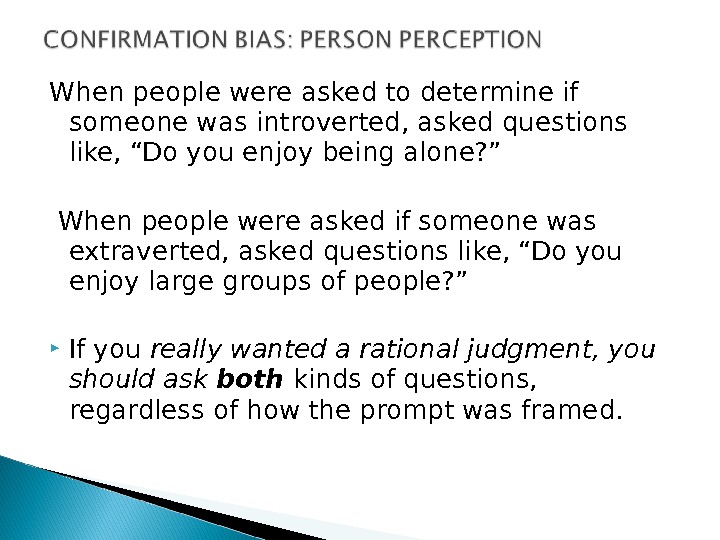
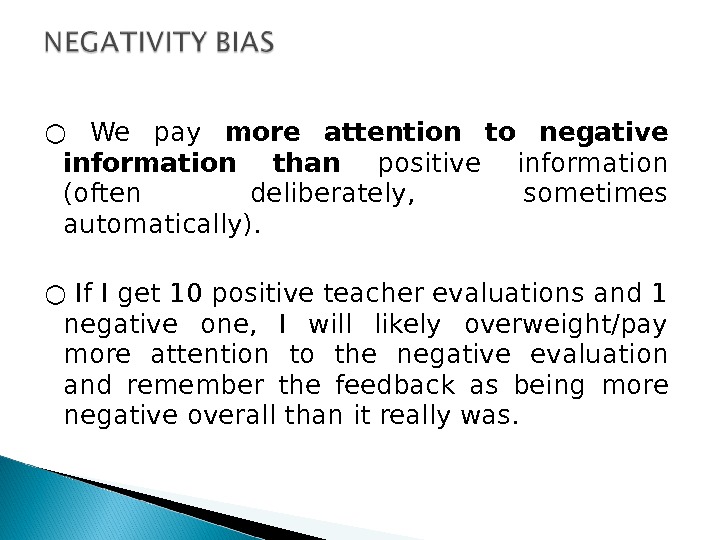

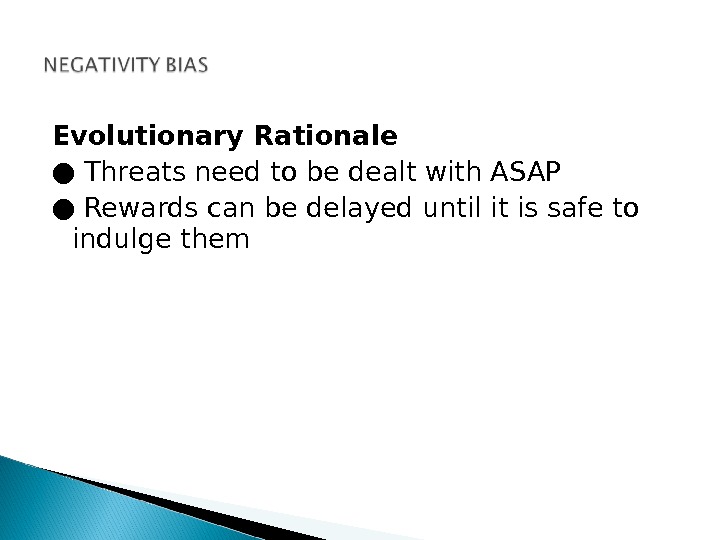
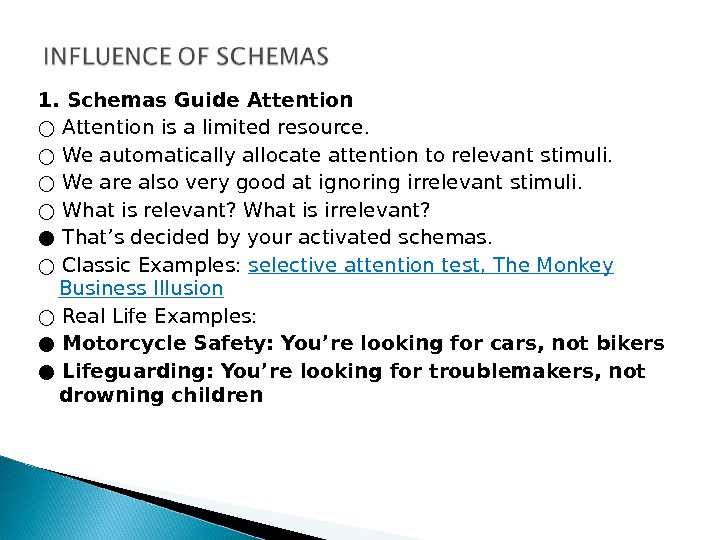
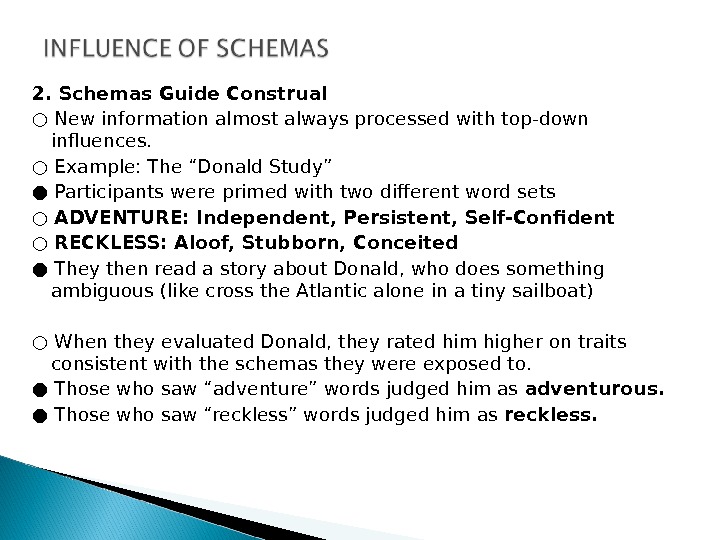
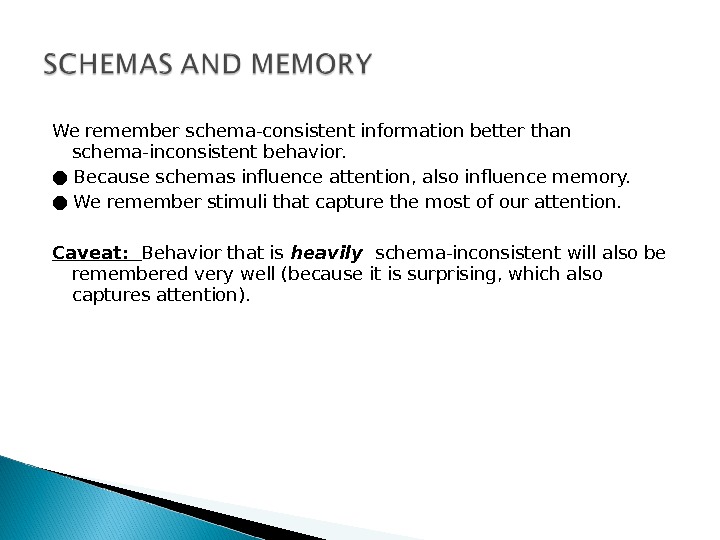


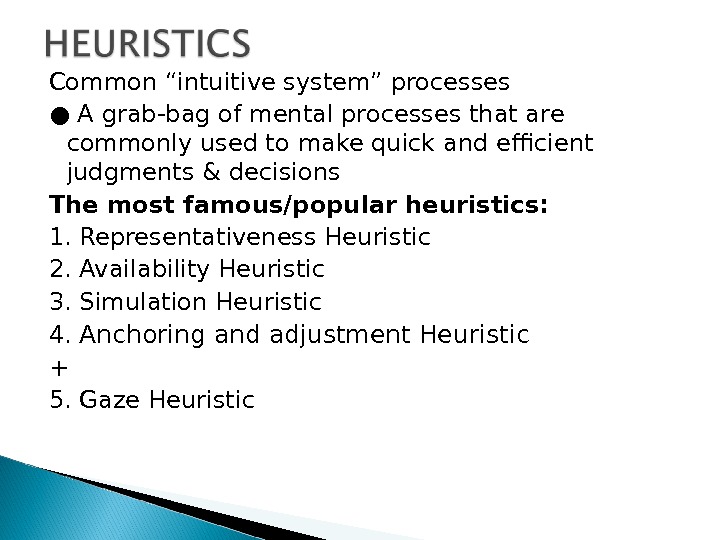
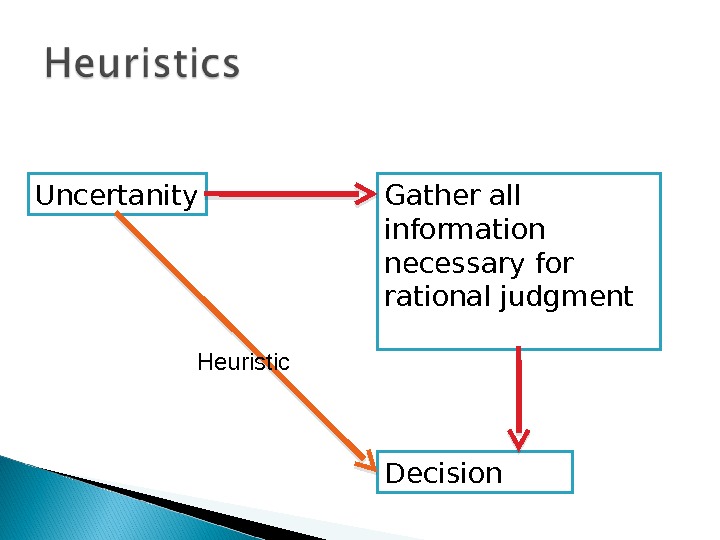
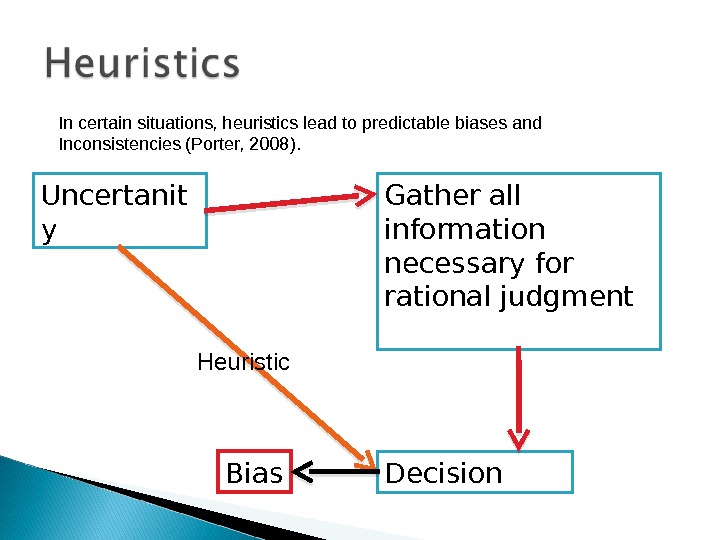
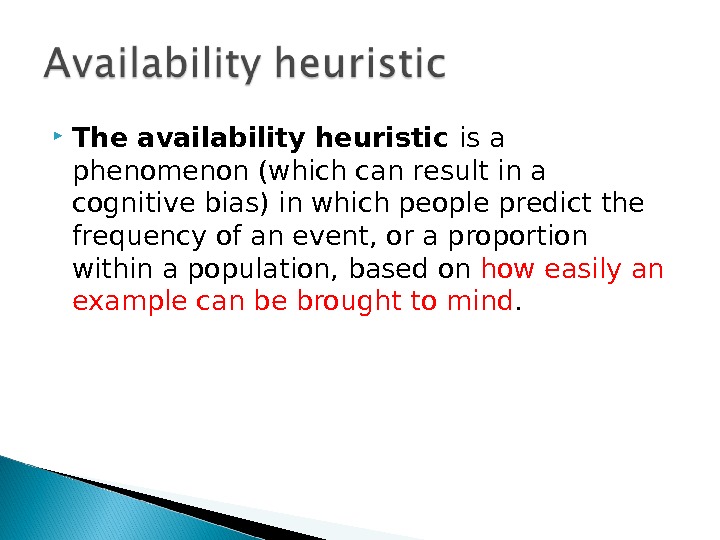
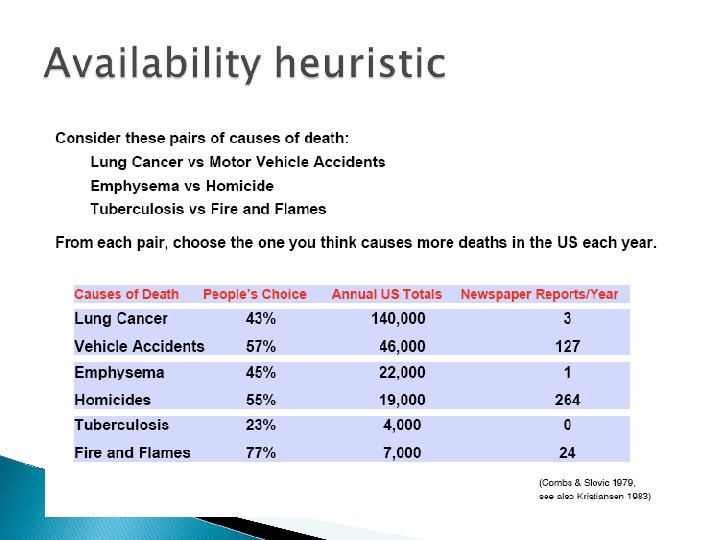
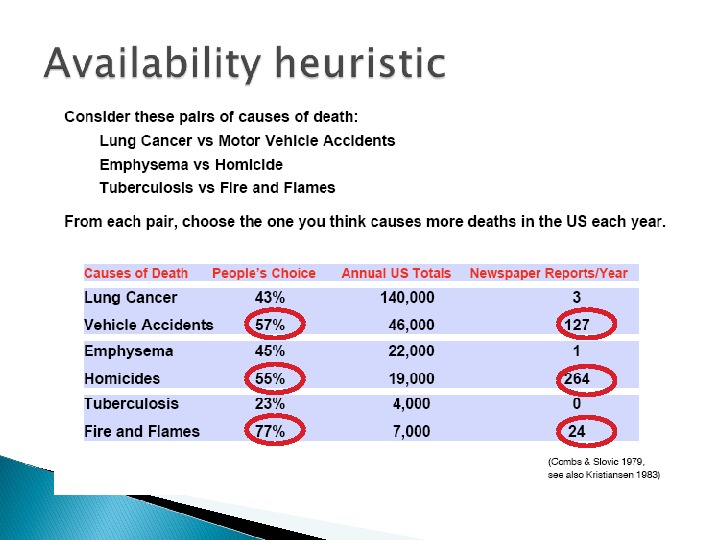
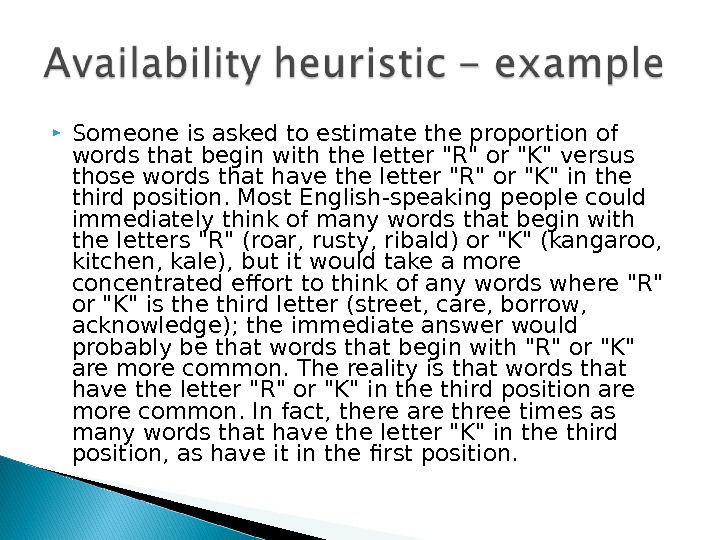
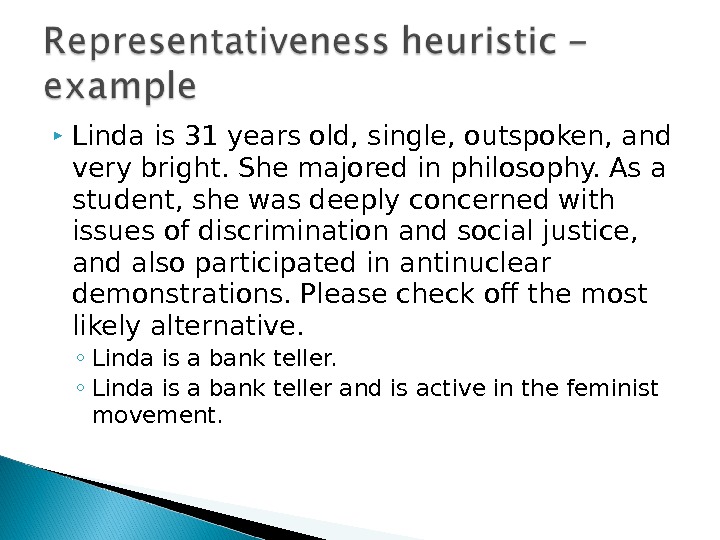

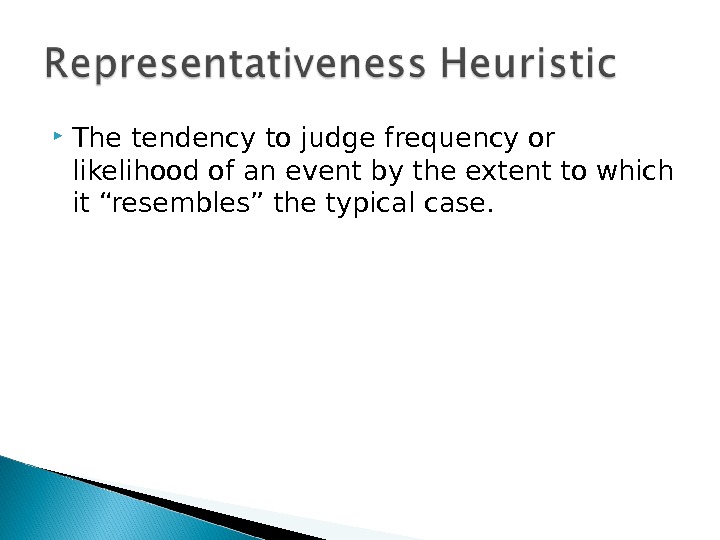
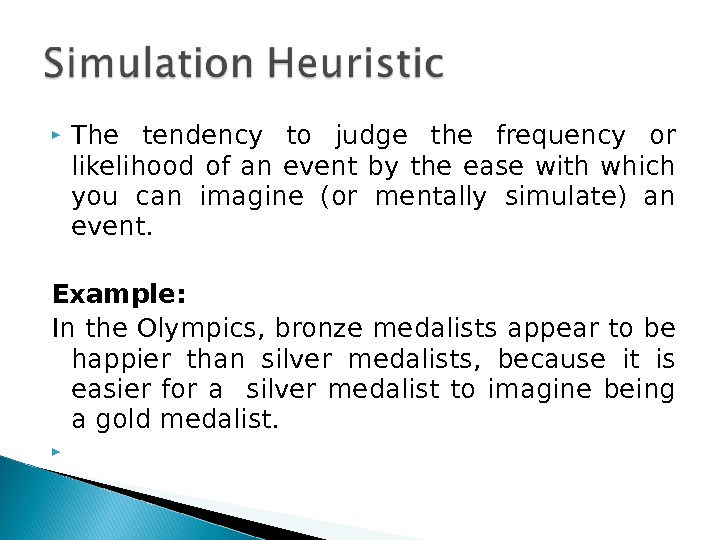
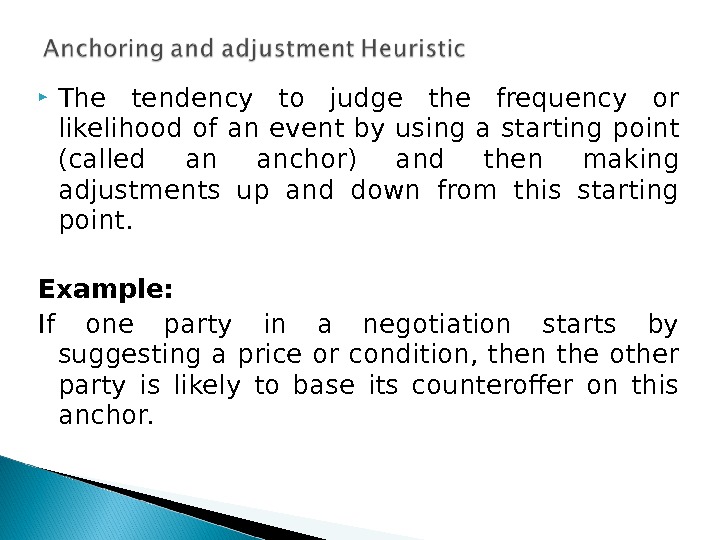
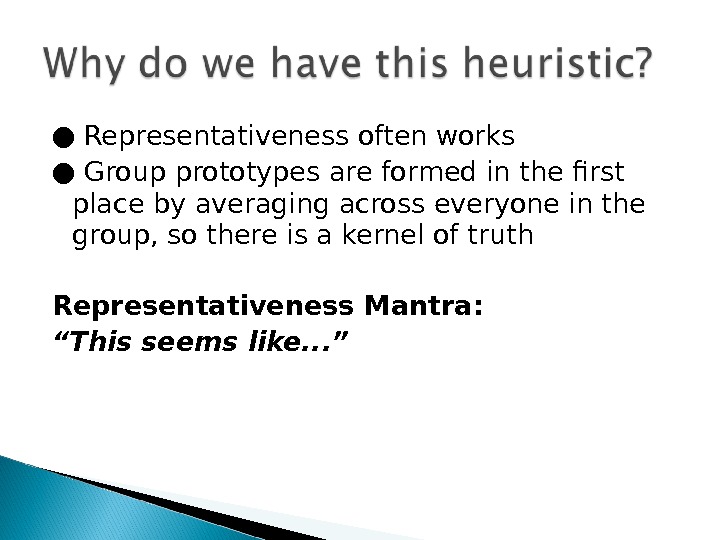

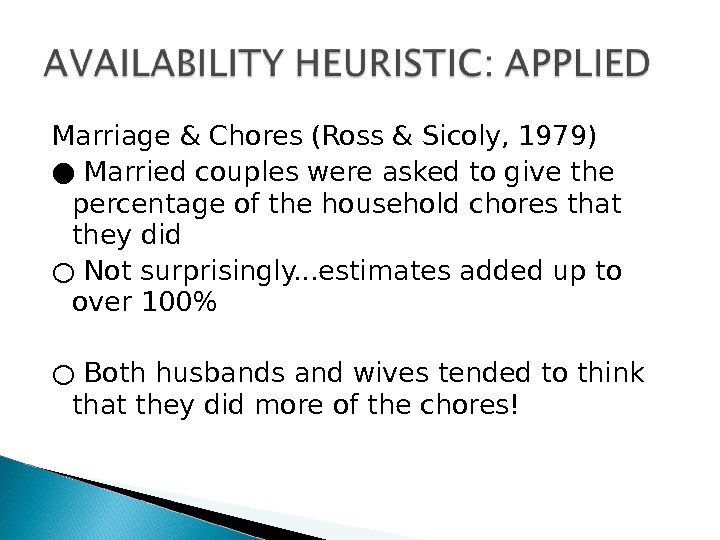


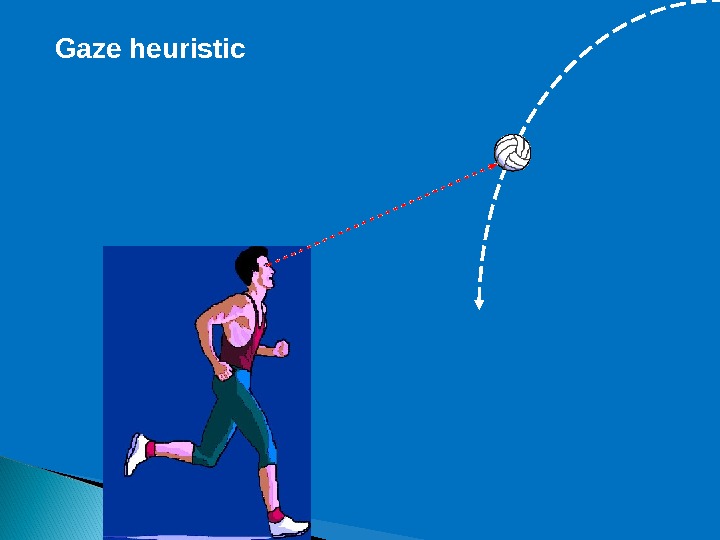
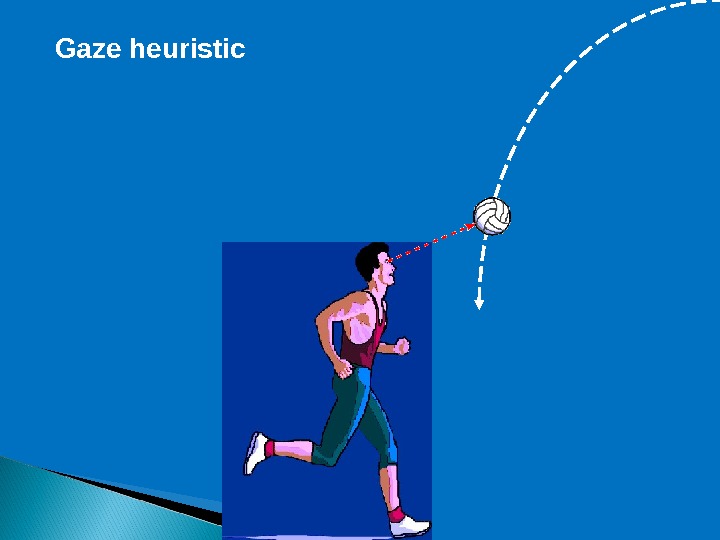
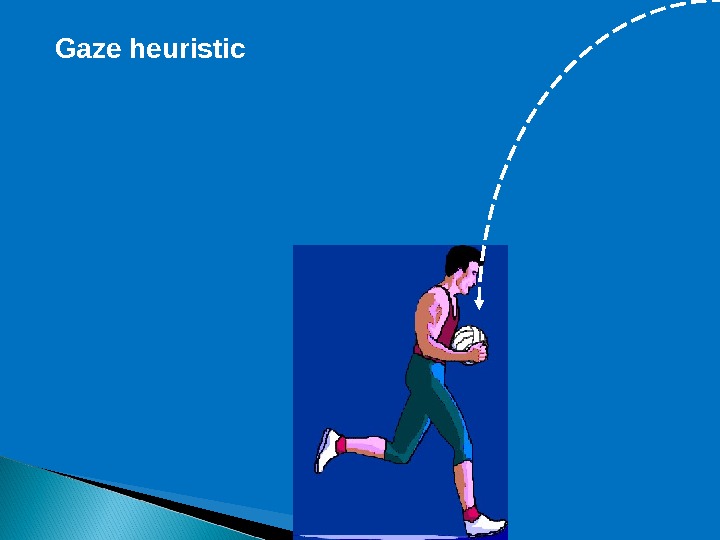
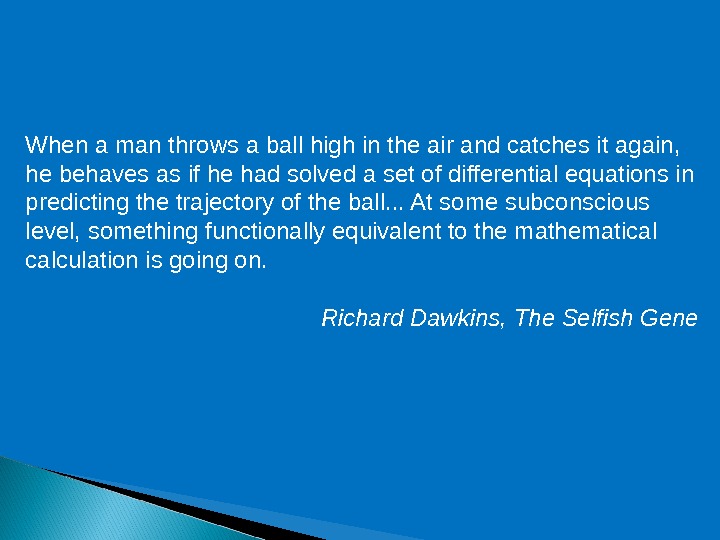

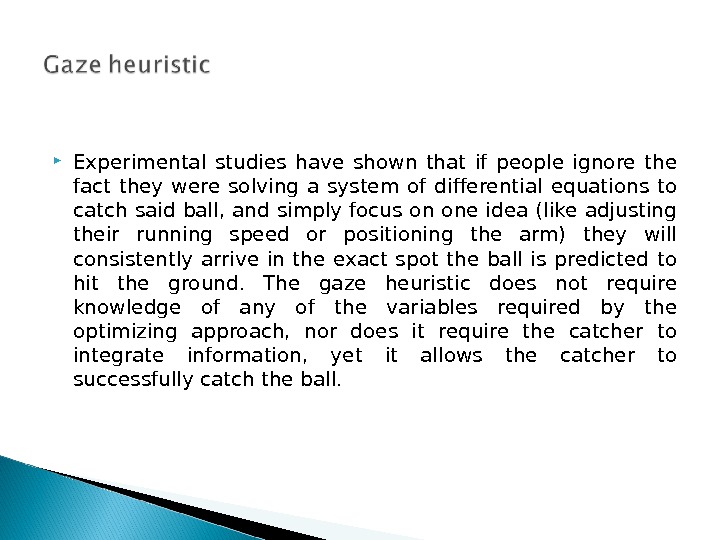
2._1209_social_cognition.ppt
- Размер: 4.2 Mегабайта
- Количество слайдов: 54
Описание презентации Lecture 2 Correspondent Inference Theory Behaviour that по слайдам
 Lecture
Lecture
 Correspondent Inference Theory Behaviour that is Freely chosen Non common in its effects Low in social desirability Somehow forced Common in its effects High in social desirability Originates from the person’s stable traits Originates from the situational effects
Correspondent Inference Theory Behaviour that is Freely chosen Non common in its effects Low in social desirability Somehow forced Common in its effects High in social desirability Originates from the person’s stable traits Originates from the situational effects
 Kelley’s covariation theory derived principally from Heider’s covariation principle , which states that people explain events in terms of things that are present when the event occurs but absent when it does not.
Kelley’s covariation theory derived principally from Heider’s covariation principle , which states that people explain events in terms of things that are present when the event occurs but absent when it does not.
 Attributions based on 3 kinds of info, which represent the degree to which: Consensus … other actors perform the same behavior with the same object.
Attributions based on 3 kinds of info, which represent the degree to which: Consensus … other actors perform the same behavior with the same object.
 Consistency …the actor performs that same behavior toward an object on different occasions.
Consistency …the actor performs that same behavior toward an object on different occasions.
 Distinctiveness …the actor performs different behaviors with different targets.
Distinctiveness …the actor performs different behaviors with different targets.

 High Consensus (Everyone hits Steve) High Consistency (Bob always hits Steve) High Distinctiveness (Bob only hits Steve)
High Consensus (Everyone hits Steve) High Consistency (Bob always hits Steve) High Distinctiveness (Bob only hits Steve)
 Low Consensus (Only Bob hits Steve) High Consistency (Bob always hits Steve) Low Distinctiveness (Bob hits everyone)
Low Consensus (Only Bob hits Steve) High Consistency (Bob always hits Steve) Low Distinctiveness (Bob hits everyone)
 Consensus The extent to which an individual’s response is similar to one shown by others Consistency The extent to which an individual responds to a given situation in the same way as on different occasions Distinctiveness The extent to which an individual responds in the same way as to different situations Low High Internal Causes Externa l Causes. Theory of Causal Attribution
Consensus The extent to which an individual’s response is similar to one shown by others Consistency The extent to which an individual responds to a given situation in the same way as on different occasions Distinctiveness The extent to which an individual responds in the same way as to different situations Low High Internal Causes Externa l Causes. Theory of Causal Attribution

 Difficult to discern the cause of behaviour, therefore we use shortcuts or heuristics. This leads to errors and biases
Difficult to discern the cause of behaviour, therefore we use shortcuts or heuristics. This leads to errors and biases

 Tendency to attribute others’ behaviour to enduring dispositions (e. g. , attitudes, personality traits) because of both: Underestimation of the influence of situational factors. Overestimation of the influence of dispositional factors.
Tendency to attribute others’ behaviour to enduring dispositions (e. g. , attitudes, personality traits) because of both: Underestimation of the influence of situational factors. Overestimation of the influence of dispositional factors.
 Four possible explanations: Behavior is more noticeable than situational factors. Insignificant weight is assigned to situational factors. People are cognitive misers. Richer trait-like language to explain behavior.
Four possible explanations: Behavior is more noticeable than situational factors. Insignificant weight is assigned to situational factors. People are cognitive misers. Richer trait-like language to explain behavior.
 T here is a pervasive tendency for actors to attribute their actions to situational requirements, whereas observers tend to attribute the same actions to stable personal dispositions
T here is a pervasive tendency for actors to attribute their actions to situational requirements, whereas observers tend to attribute the same actions to stable personal dispositions
 Tendency to attribute: Personal success Internal Personal failure External Other’s success External Other’s failure Internal
Tendency to attribute: Personal success Internal Personal failure External Other’s success External Other’s failure Internal
 Internal. External. Failure External. Internal. Success Other. Self
Internal. External. Failure External. Internal. Success Other. Self
 Motivational : Self-esteem maintenance. Social : Self-presentation and impression formation. Cultural : Effects are less prevalent in Eastern/Collectivistic cultures
Motivational : Self-esteem maintenance. Social : Self-presentation and impression formation. Cultural : Effects are less prevalent in Eastern/Collectivistic cultures
 FAE applied to in- and out- groups, i. e. , Bias towards: internal attributions for in-group success and external attributions for in-group failures Opposite for out-groups
FAE applied to in- and out- groups, i. e. , Bias towards: internal attributions for in-group success and external attributions for in-group failures Opposite for out-groups
 The tendency to test a proposition by searching for evidence that would support it. ○ If you want to support a particular viewpoint/candidate/etc. , you look for material that supports this POV and ignore material that does not. ○ People are more likely to readily accept information that supports what they want to be true, but critically scrutinize/discount information that contradicts them. ○ However, it is not necessarily this ideologically motivated; it can just mean that people only test hypotheses by trying to confirm them, not by trying to reject them.
The tendency to test a proposition by searching for evidence that would support it. ○ If you want to support a particular viewpoint/candidate/etc. , you look for material that supports this POV and ignore material that does not. ○ People are more likely to readily accept information that supports what they want to be true, but critically scrutinize/discount information that contradicts them. ○ However, it is not necessarily this ideologically motivated; it can just mean that people only test hypotheses by trying to confirm them, not by trying to reject them.
 Snyder & Swann, 1978 ○ Introduced a person to the participants of the experiment ○ Had to ask questions to get to know him/her better.
Snyder & Swann, 1978 ○ Introduced a person to the participants of the experiment ○ Had to ask questions to get to know him/her better.
 When people were asked to determine if someone was introverted, asked questions like, “Do you enjoy being alone? ” When people were asked if someone was extraverted, asked questions like, “Do you enjoy large groups of people? ” If you really wanted a rational judgment, you should ask both kinds of questions, regardless of how the prompt was framed.
When people were asked to determine if someone was introverted, asked questions like, “Do you enjoy being alone? ” When people were asked if someone was extraverted, asked questions like, “Do you enjoy large groups of people? ” If you really wanted a rational judgment, you should ask both kinds of questions, regardless of how the prompt was framed.
 ○ We pay more attention to negative information than positive information (often deliberately, sometimes automatically). ○ If I get 10 positive teacher evaluations and 1 negative one, I will likely overweight/pay more attention to the negative evaluation and remember the feedback as being more negative overall than it really was.
○ We pay more attention to negative information than positive information (often deliberately, sometimes automatically). ○ If I get 10 positive teacher evaluations and 1 negative one, I will likely overweight/pay more attention to the negative evaluation and remember the feedback as being more negative overall than it really was.

 Evolutionary Rationale ● Threats need to be dealt with ASAP ● Rewards can be delayed until it is safe to indulge them
Evolutionary Rationale ● Threats need to be dealt with ASAP ● Rewards can be delayed until it is safe to indulge them
 1. Schemas Guide Attention ○ Attention is a limited resource. ○ We automatically allocate attention to relevant stimuli. ○ We are also very good at ignoring irrelevant stimuli. ○ What is relevant? What is irrelevant? ● That’s decided by your activated schemas. ○ Classic Examples: selective attention test , The Monkey Business Illusion ○ Real Life Examples: ● Motorcycle Safety: You’re looking for cars, not bikers ● Lifeguarding: You’re looking for troublemakers, not drowning children
1. Schemas Guide Attention ○ Attention is a limited resource. ○ We automatically allocate attention to relevant stimuli. ○ We are also very good at ignoring irrelevant stimuli. ○ What is relevant? What is irrelevant? ● That’s decided by your activated schemas. ○ Classic Examples: selective attention test , The Monkey Business Illusion ○ Real Life Examples: ● Motorcycle Safety: You’re looking for cars, not bikers ● Lifeguarding: You’re looking for troublemakers, not drowning children
 2. Schemas Guide Construal ○ New information almost always processed with top-down influences. ○ Example: The “Donald Study” ● Participants were primed with two different word sets ○ ADVENTURE: Independent, Persistent, Self-Confident ○ RECKLESS: Aloof, Stubborn, Conceited ● They then read a story about Donald, who does something ambiguous (like cross the Atlantic alone in a tiny sailboat) ○ When they evaluated Donald, they rated him higher on traits consistent with the schemas they were exposed to. ● Those who saw “adventure” words judged him as adventurous. ● Those who saw “reckless” words judged him as reckless.
2. Schemas Guide Construal ○ New information almost always processed with top-down influences. ○ Example: The “Donald Study” ● Participants were primed with two different word sets ○ ADVENTURE: Independent, Persistent, Self-Confident ○ RECKLESS: Aloof, Stubborn, Conceited ● They then read a story about Donald, who does something ambiguous (like cross the Atlantic alone in a tiny sailboat) ○ When they evaluated Donald, they rated him higher on traits consistent with the schemas they were exposed to. ● Those who saw “adventure” words judged him as adventurous. ● Those who saw “reckless” words judged him as reckless.
 We remember schema-consistent information better than schema-inconsistent behavior. ● Because schemas influence attention, also influence memory. ● We remember stimuli that capture the most of our attention. Caveat: Behavior that is heavily schema-inconsistent will also be remembered very well (because it is surprising, which also captures attention).
We remember schema-consistent information better than schema-inconsistent behavior. ● Because schemas influence attention, also influence memory. ● We remember stimuli that capture the most of our attention. Caveat: Behavior that is heavily schema-inconsistent will also be remembered very well (because it is surprising, which also captures attention).
 Cohen, 1981 ● Participants watched video of a husband & wife having dinner. ● Half were told that the woman was a librarian, half a waitress. ● The video included an equal number of “events” that were consistent with either “librarian” or “waitress” stereotypes. ● Students later took a test to see what they remembered. ○ Was the woman drinking wine or beer? ○ Did she receive a history book or a romance novel as a gift? People remember stereotype-consistent information much more than stereotype-inconsistent information
Cohen, 1981 ● Participants watched video of a husband & wife having dinner. ● Half were told that the woman was a librarian, half a waitress. ● The video included an equal number of “events” that were consistent with either “librarian” or “waitress” stereotypes. ● Students later took a test to see what they remembered. ○ Was the woman drinking wine or beer? ○ Did she receive a history book or a romance novel as a gift? People remember stereotype-consistent information much more than stereotype-inconsistent information
 INTUITION AND HEURISTICS
INTUITION AND HEURISTICS
 Common “intuitive system” processes ● A grab-bag of mental processes that are commonly used to make quick and efficient judgments & decisions The most famous/popular heuristics: 1. Representativeness Heuristic 2. Availability Heuristic 3. Simulation Heuristic 4. Anchoring and adjustment Heuristic + 5. Gaze Heuristic
Common “intuitive system” processes ● A grab-bag of mental processes that are commonly used to make quick and efficient judgments & decisions The most famous/popular heuristics: 1. Representativeness Heuristic 2. Availability Heuristic 3. Simulation Heuristic 4. Anchoring and adjustment Heuristic + 5. Gaze Heuristic
 Uncertanity Gather all information necessary for rational judgment Decision. Heuristic
Uncertanity Gather all information necessary for rational judgment Decision. Heuristic
 Uncertanit y Gather all information necessary for rational judgment Decision. Heuristic. In certain situations, heuristics lead to predictable biases and Inconsistencies (Porter, 2008). Bias
Uncertanit y Gather all information necessary for rational judgment Decision. Heuristic. In certain situations, heuristics lead to predictable biases and Inconsistencies (Porter, 2008). Bias
 The availability heuristic is a phenomenon (which can result in a cognitive bias) in which people predict the frequency of an event, or a proportion within a population, based on how easily an example can be brought to mind.
The availability heuristic is a phenomenon (which can result in a cognitive bias) in which people predict the frequency of an event, or a proportion within a population, based on how easily an example can be brought to mind.


 Someone is asked to estimate the proportion of words that begin with the letter «R» or «K» versus those words that have the letter «R» or «K» in the third position. Most English-speaking people could immediately think of many words that begin with the letters «R» (roar, rusty, ribald) or «K» (kangaroo, kitchen, kale), but it would take a more concentrated effort to think of any words where «R» or «K» is the third letter (street, care, borrow, acknowledge); the immediate answer would probably be that words that begin with «R» or «K» are more common. The reality is that words that have the letter «R» or «K» in the third position are more common. In fact, there are three times as many words that have the letter «K» in the third position, as have it in the first position.
Someone is asked to estimate the proportion of words that begin with the letter «R» or «K» versus those words that have the letter «R» or «K» in the third position. Most English-speaking people could immediately think of many words that begin with the letters «R» (roar, rusty, ribald) or «K» (kangaroo, kitchen, kale), but it would take a more concentrated effort to think of any words where «R» or «K» is the third letter (street, care, borrow, acknowledge); the immediate answer would probably be that words that begin with «R» or «K» are more common. The reality is that words that have the letter «R» or «K» in the third position are more common. In fact, there are three times as many words that have the letter «K» in the third position, as have it in the first position.
 Linda is 31 years old, single, outspoken, and very bright. She majored in philosophy. As a student, she was deeply concerned with issues of discrimination and social justice, and also participated in antinuclear demonstrations. Please check off the most likely alternative. ◦ Linda is a bank teller and is active in the feminist movement.
Linda is 31 years old, single, outspoken, and very bright. She majored in philosophy. As a student, she was deeply concerned with issues of discrimination and social justice, and also participated in antinuclear demonstrations. Please check off the most likely alternative. ◦ Linda is a bank teller and is active in the feminist movement.
 (Porter, 2008)
(Porter, 2008)
 The tendency to judge frequency or likelihood of an event by the extent to which it “resembles” the typical case.
The tendency to judge frequency or likelihood of an event by the extent to which it “resembles” the typical case.
 The tendency to judge the frequency or likelihood of an event by the ease with which you can imagine (or mentally simulate) an event. Example: In the Olympics, bronze medalists appear to be happier than silver medalists, because it is easier for a silver medalist to imagine being a gold medalist.
The tendency to judge the frequency or likelihood of an event by the ease with which you can imagine (or mentally simulate) an event. Example: In the Olympics, bronze medalists appear to be happier than silver medalists, because it is easier for a silver medalist to imagine being a gold medalist.
 The tendency to judge the frequency or likelihood of an event by using a starting point (called an anchor) and then making adjustments up and down from this starting point. Example: If one party in a negotiation starts by suggesting a price or condition, then the other party is likely to base its counteroffer on this anchor.
The tendency to judge the frequency or likelihood of an event by using a starting point (called an anchor) and then making adjustments up and down from this starting point. Example: If one party in a negotiation starts by suggesting a price or condition, then the other party is likely to base its counteroffer on this anchor.
 ● Representativeness often works ● Group prototypes are formed in the first place by averaging across everyone in the group, so there is a kernel of truth Representativeness Mantra: “ This seems like. . . ”
● Representativeness often works ● Group prototypes are formed in the first place by averaging across everyone in the group, so there is a kernel of truth Representativeness Mantra: “ This seems like. . . ”
 ○ Group Projects ● Because you worked on your portion of a group project, it’s easy for you to recall exactly what you worked on ● Because you didn’t work on your partners’ portions, it’s not easy for you to recall exactly what they worked on Result: People tend to overestimate their own contributions to joint projects.
○ Group Projects ● Because you worked on your portion of a group project, it’s easy for you to recall exactly what you worked on ● Because you didn’t work on your partners’ portions, it’s not easy for you to recall exactly what they worked on Result: People tend to overestimate their own contributions to joint projects.
 Marriage & Chores (Ross & Sicoly, 1979) ● Married couples were asked to give the percentage of the household chores that they did ○ Not surprisingly. . . estimates added up to over 100% ○ Both husbands and wives tended to think that they did more of the chores!
Marriage & Chores (Ross & Sicoly, 1979) ● Married couples were asked to give the percentage of the household chores that they did ○ Not surprisingly. . . estimates added up to over 100% ○ Both husbands and wives tended to think that they did more of the chores!
 The gaze heuristic is a heuristic used in directing correct motion to achieve a goal using one main variable. An example of the gaze heuristic is catching a ball. The gaze heuristic is one example where humans and animals are able to process large amounts of information quickly and react, regardless of whether the information is consciously processed. The gaze heuristic is a critical element in animal behavior, being used in predation heavily. At the most basic level, the gaze heuristic ignores all casual relevant variables to make quick gut reactions.
The gaze heuristic is a heuristic used in directing correct motion to achieve a goal using one main variable. An example of the gaze heuristic is catching a ball. The gaze heuristic is one example where humans and animals are able to process large amounts of information quickly and react, regardless of whether the information is consciously processed. The gaze heuristic is a critical element in animal behavior, being used in predation heavily. At the most basic level, the gaze heuristic ignores all casual relevant variables to make quick gut reactions.
 Gaze heuristic
Gaze heuristic
 Gaze heuristic
Gaze heuristic
 Gaze heuristic
Gaze heuristic
 Gaze heuristic
Gaze heuristic
 When a man throws a ball high in the air and catches it again, he behaves as if he had solved a set of differential equations in predicting the trajectory of the ball. . . At some subconscious level, something functionally equivalent to the mathematical calculation is going on. Richard Dawkins, The Selfish Gene
When a man throws a ball high in the air and catches it again, he behaves as if he had solved a set of differential equations in predicting the trajectory of the ball. . . At some subconscious level, something functionally equivalent to the mathematical calculation is going on. Richard Dawkins, The Selfish Gene

 Experimental studies have shown that if people ignore the fact they were solving a system of differential equations to catch said ball, and simply focus on one idea (like adjusting their running speed or positioning the arm) they will consistently arrive in the exact spot the ball is predicted to hit the ground. The gaze heuristic does not require knowledge of any of the variables required by the optimizing approach, nor does it require the catcher to integrate information, yet it allows the catcher to successfully catch the ball.
Experimental studies have shown that if people ignore the fact they were solving a system of differential equations to catch said ball, and simply focus on one idea (like adjusting their running speed or positioning the arm) they will consistently arrive in the exact spot the ball is predicted to hit the ground. The gaze heuristic does not require knowledge of any of the variables required by the optimizing approach, nor does it require the catcher to integrate information, yet it allows the catcher to successfully catch the ball.

